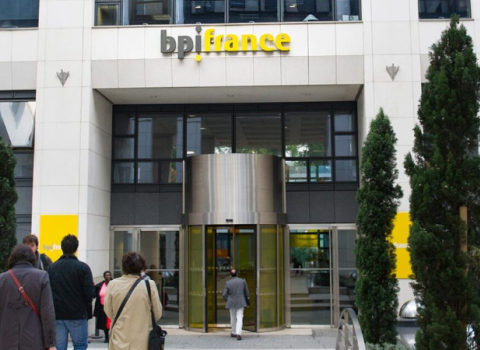
Although medicines must undergo extensive trials in adults before being released onto the market, until recently no such rule required their testing in the paediatric population (adolescents, children, toddlers and newborns). As a result, according to a paper in the British Medical Journal in 2000, an estimated 50 per cent of all drugs used to treat children have never been tested in children. That figure is thought to rise to 90 per cent in neonatal intensive care.
Thus, because of widely differing pharmacokinetics between adults and children, kids the world over have been exposed to potential side effects and inappropriate dosing of adult-approved medicines. This situation is now viewed as ethically unsound, and moves have been afoot to redress the inequality.
Seven years ago (view timeline), the US introduced the Paediatric Rule in an effort
to direct pharmaceutical companies to assess drug safety and efficacy
in children. This legislation and its subsequent revisions have yielded
admirable progress in this field: 661 paediatric trials have been
conducted, leading to 64 labels containing new paediatric information
for established medicines between July 1998 and February 2004.

Peter Arlett, European Commission
Preparing for business
Many European countries anticipate a green light for the new regulation and have already begun to prepare for business. For example, Germany has an established network of six paediatric testing centres called PAED-Net. The Réseau d’Investigation Pédiatrique des Produits de Santé exists in France. And this March, the UK launched its Medicines for Children Research Network, headed by Professor Rosalind Smyth of the University of Liverpool and Alder Hey Children’s Hospital. Efforts are now being made to integrate the various national networks into a European entity.
“Obviously paediatric testing will remain heavily reliant on
academic and specialist centers because they are the sites where sick
children are taken care of and clinical studies will be performed by
the doctors and nurses who usually look after them,” says Gérard Pons
Head of the Perinatal and Pediatric Pharmacology department, Hôpital
Saint Vincent de Paul, Paris. Thus, paediatric trials look likely
to be dominated by academic centres rather than the pharmaceutical
industry.
‘Industry is not skilled at paediatric testing’
This situation mirrors that in the US, where despite industry having been compelled by law to run paediatric trials since 1998, the central testing facility remains the Pediatric Pharmacology Research Unit (PPRU) Network which comprises 13 NIH- and hospital-funded specialist centres. “Industry is not skilled at paediatric testing. Only the very largest firms have the expertise, and then it's often because they hired pediatricians into general medical positions,” says Ross Mckinney, at the Duke University of North Carolina PPRU. “In fact, we’ve been generally disappointed by the level of interest of the pharmaceutical industry. I suspect they remain more concerned by the possibility that an adverse event will turn up in children and affect their sales to adults. As a result of this relative lack of interest, our PPRU has been limited to federal funding at a level that was originally designed to provide an infrastructure framework, but not money to actually execute studies,” says Mckinney.
Peter Adamson, at the Children’s Hospital Philadelphia PPRU goes one step further. “Yes [expertise] is still lacking to large measure in industry, but there’s probably still a large gap in requirements at all levels—that includes in academic centres and at the government level in the FDA as well as industry,” he says.
Robert Ward, at the University of Utah Pediatric Pharmacology Program PPRU confirms the deficit. “The number of trained pediatric clinical pharmacologists was limited and often not enough to accomplish the studies. What’s more, the training of pediatric clinical pharmacologists did not always include training about the FDA regulations to which the studies must adhere and companies don't always utilize the available pediatric expertise in design of studies.”
“We don’t have enough paediatric pharmacologists either,” claims Sander Vinks, of the Cincinnati Children's Hospital Medical Center PPRU. “From the beginning there have been funds set aside for training but there are very few paediatric clinical pharmacologists. We have four but that’s very unusual.”
“The shortage of adequately trained pharmacologists is a problem shared by everyone in the field of paediatric drug research. Knowing how to do the assays is not enough. Paediatric pharmacologists need to understand the dynamics of a developing metabolism. They need to be able to design trials with fewer, smaller samples. And they need to be prepared for unexpected results, given the vagaries of a child’s growth,” explains Mckinney.
Where are the paediatric pharmacologists?
The lack of trained clinical paediatric pharmacologists in Europe is also an acknowledged problem. According to Fred Zepp of Germany’s PAED-Net there are only 12 in the EU. Pons points out that the EU proposal does not contain funding for the training of more specialists. “A single EU teaching programme for paediatric pharmacologists has been in operation for four years but operates solely on a voluntary basis at the initiative of a few academics,” he says. The UK is currently training three paediatric clinical pharmacologists.
However, Arlett believes that Europe can still capitalize on the situation: “It is acknowledged that the speciality of paediatric clinical pharmacology is underdeveloped in Europe. There are, however, many thousands of highly trained paediatricians. In its original proposal for the regulation, the Commission calls on the Member States to address infrastructure and personnel issues to ensure that the EU—rather than the US—is the site where industry chooses to conduct clinical trials involving children.”
Not only is financial support for training a problem, it is also a major issue for the process of paediatric testing in general. “In my opinion the biggest hurdle in establishing a network of paediatric testing centres throughout Europe will be money, because the source and the duration of funding remain unclear,” says Pons. Whereas the NIH currently funds the PPRU network to the tune of $4.8 million, the European regulatory document carries no details of how the research network is to be funded even though official estimates put the cost of testing medicines for children at an average of €4 million per product, according to research conducted by RAND Europe for the European Commission.
“This is probably a very important thing for people in Europe to consider,” says Vinks. “Competitive renewal as we know it here is exactly what it says, and if you want to build a network where players are, at the end of the cycle, competitors for funding, you can imagine that not everybody is willing to share everything all the time.”





 A unique international forum for public research organisations and companies to connect their external engagement with strategic interests around their R&D system.
A unique international forum for public research organisations and companies to connect their external engagement with strategic interests around their R&D system.